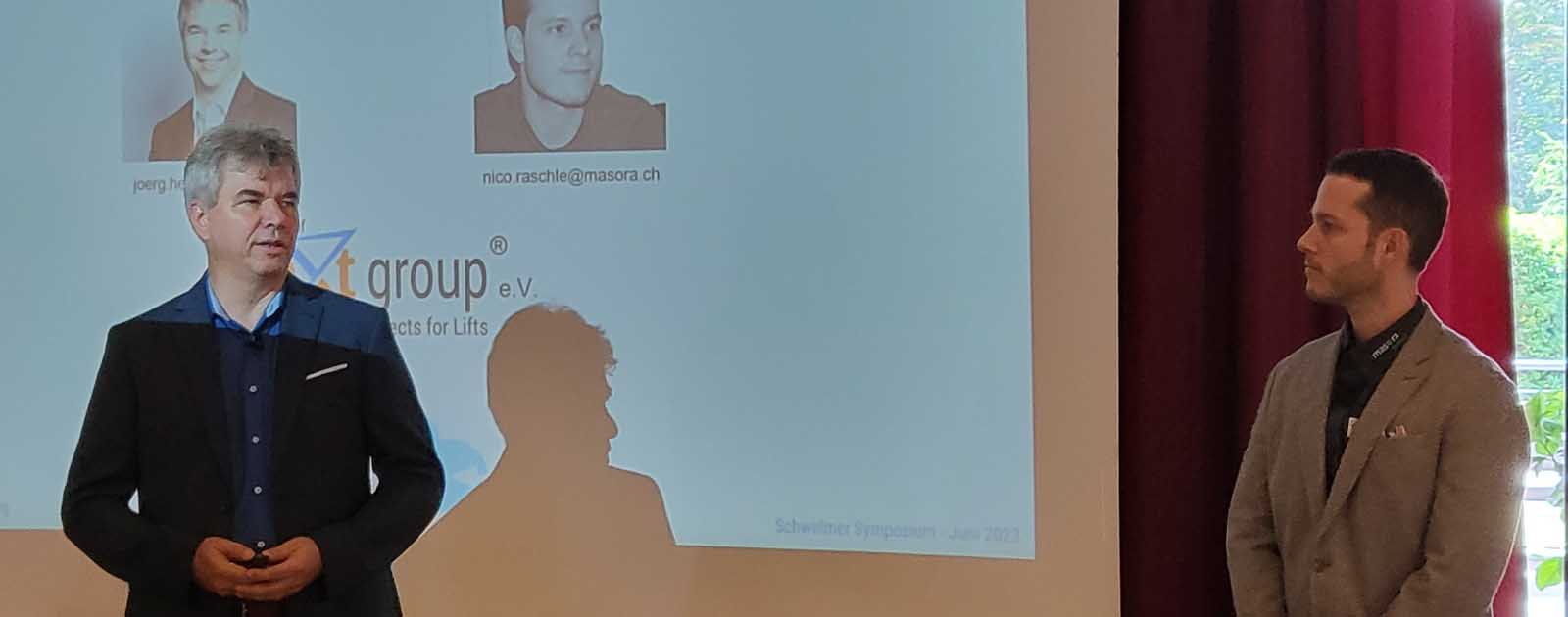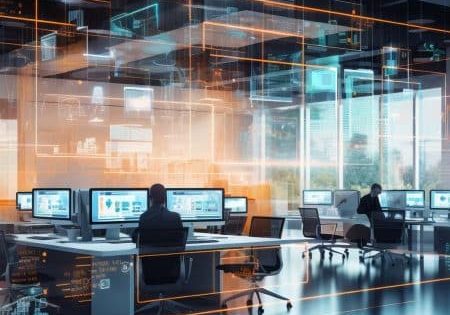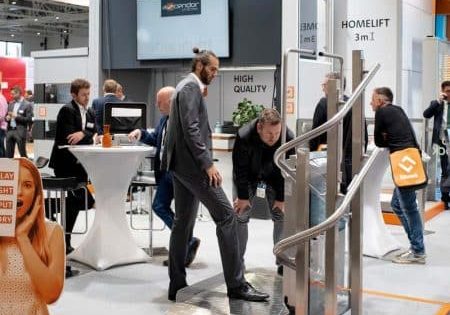Schwelm Symposium 2023
Oct 5, 2023
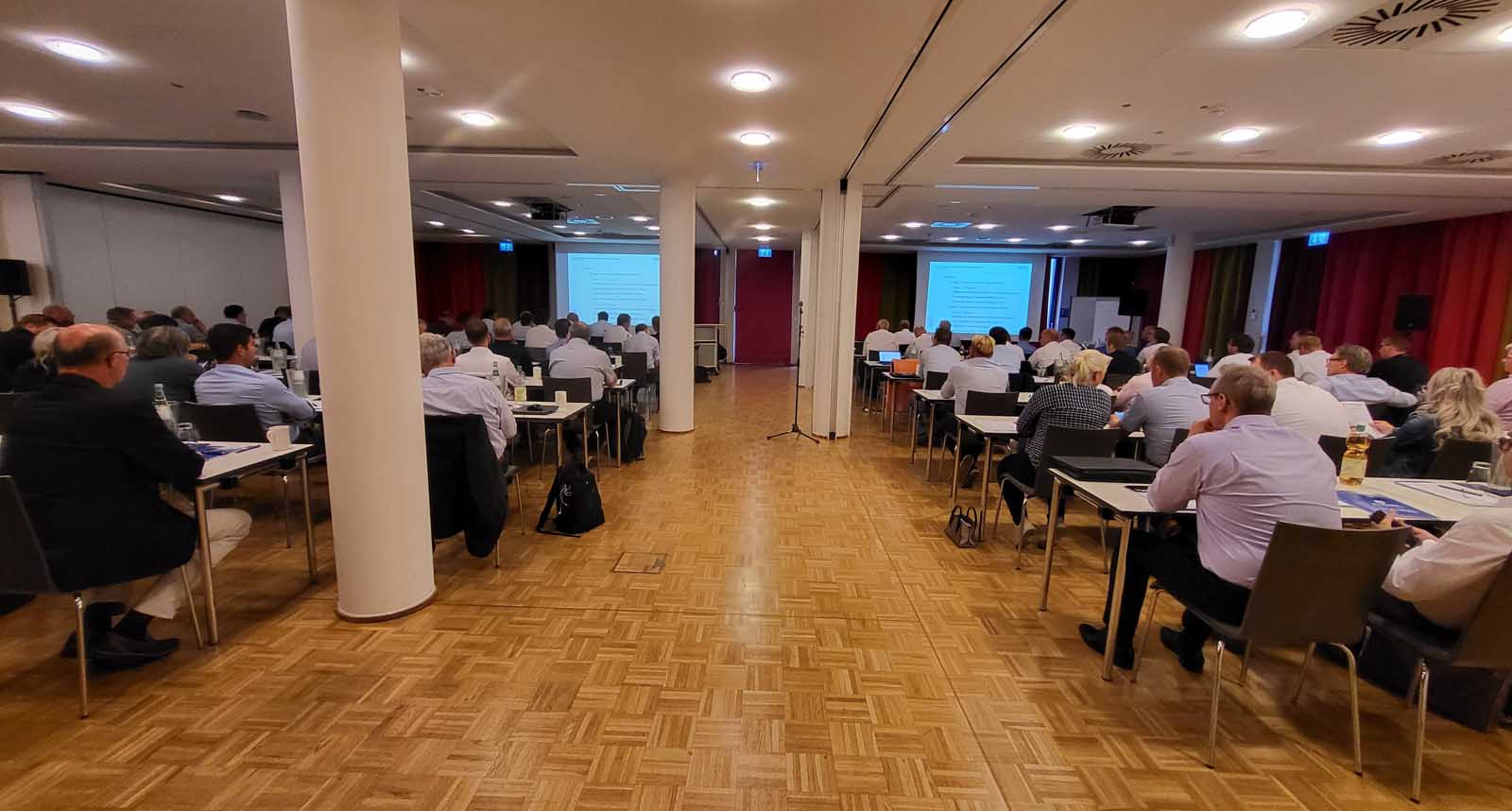
The “hottest” elevator date in Germany
A sunny 35.5° Celsius reports your authoress from her drive to the Schwelm Symposium 2023 in the middle of June in North-Rhine Westphalia, Germany. Henning, based in Schwelm, again made the arrangements for this conference sponsored by VFA-Interlift, one of the three German industrial associations for mainly small and medium-size enterprises (SME) elevator and escalator manufacturers.
Under the guideline “Modern Technology in Elevators,” 20 distinguished speakers presented current specialized topics with subsequent discussion to 116 representatives from predominantly elevator and component manufacturers and operators over two packed days. On the evening before, the company AWF Lift Solutions hosted a dinner.
In a room adjoining the lecture hall, 18 exhibitors were placed around a coffee table. The exhibits themselves and the experts staffing the small booths gave a lot of inspiration for technical discussions during the breaks. The two chairpersons had to “jingle the bell“ loudly and persistently to call participants back to the oral presentations.
On the first day, Wolfram Vogel, Vogel Gut Achten (arbitrament), opened the event, which he also chaired that day. According to him, the conference is meant to reflect the thinking of medium-sized enterprises, which is characterized by long-term product planning and customer relations, as well as in-house education of employees. The content covers all aspects of interdisciplinary elevator technology to help companies meet the demands — fast, safe, interdisciplinary and efficient — on the industry. Volker Lenzner led through the second day for VFA-Interlift.
Five main topics were covered during the two days: sustainability; digitalization, including building information modeling (BIM); technical solutions; legislation/standardization; and technical and social framework conditions.
“For me, a really green elevator!”
Volker Hager, Hydroware: Circular economy in the elevator construction
The idea of avoiding waste is finding its way into the construction industry. When considering CO2 over an entire building and its lifetime, the so-called “gray energy” in the steel and concrete used makes the crucial difference. The steel industry’s CO2 emissions account for 7% of global emissions, about the same as the cement industry.
In the elevator industry, the alternative to comply is full replacement versus modernization. Reliable data as the basis for a decision on this can be found in an EPD (Environmental Product Declaration) study. To obtain the data, a life cycle assessment (LCA) equals the effect of a product system on the environment, and human health is required. Its quantification is divided into various impact categories with the focus currently on climate change, but the red light is given to biochemical flows (e.g., phosphor and nitrogen) and biosphere integrity (e.g., insects). Within these factors, the environmental impacts of raw material extraction, manufacturing, distribution, use and end-of-life are assessed.
Hydroware executed a LCA for one of its products — Vidi 3G-5.20 — to identify mitigation measures for adverse effects and to avoid shifting impacts from one part of the lifecycle to another. A 25-year life span and open interfaces were assumed so that components could be replaced later. The LCA was prepared with the help of a Swedish environmental institute according to the Product Category Rules for Construction Products (PCR 2019:14) and the sub-PCR for elevators (c-008) in the international EPD system for LCAs. Modernized were the control system, drive, call buttons, car panel, electrical installation, door drive/mechanical and electrical safety elements, car and landing doors of a hydraulic 1.000 kg elevator with four stops in a residential building with 50 trips per day and a speed of 0.63 m/s (2.7 ft/s). Recycling was not included.
When considering the CO2 focus (climate aspect), energy consumption including raw materials and operation are the main topics in the result of the LCA. An overall LCA considering all environmental impacts results in an approximately equal distribution between the influences of material and production, energy consumption and modernization. The climate impact of the elevator under consideration is 16,868 CO2 equivalents. Modernization makes sense at a standby consumption of 40 W. With electricity from renewable sources, the elevator achieves positive energy balance.
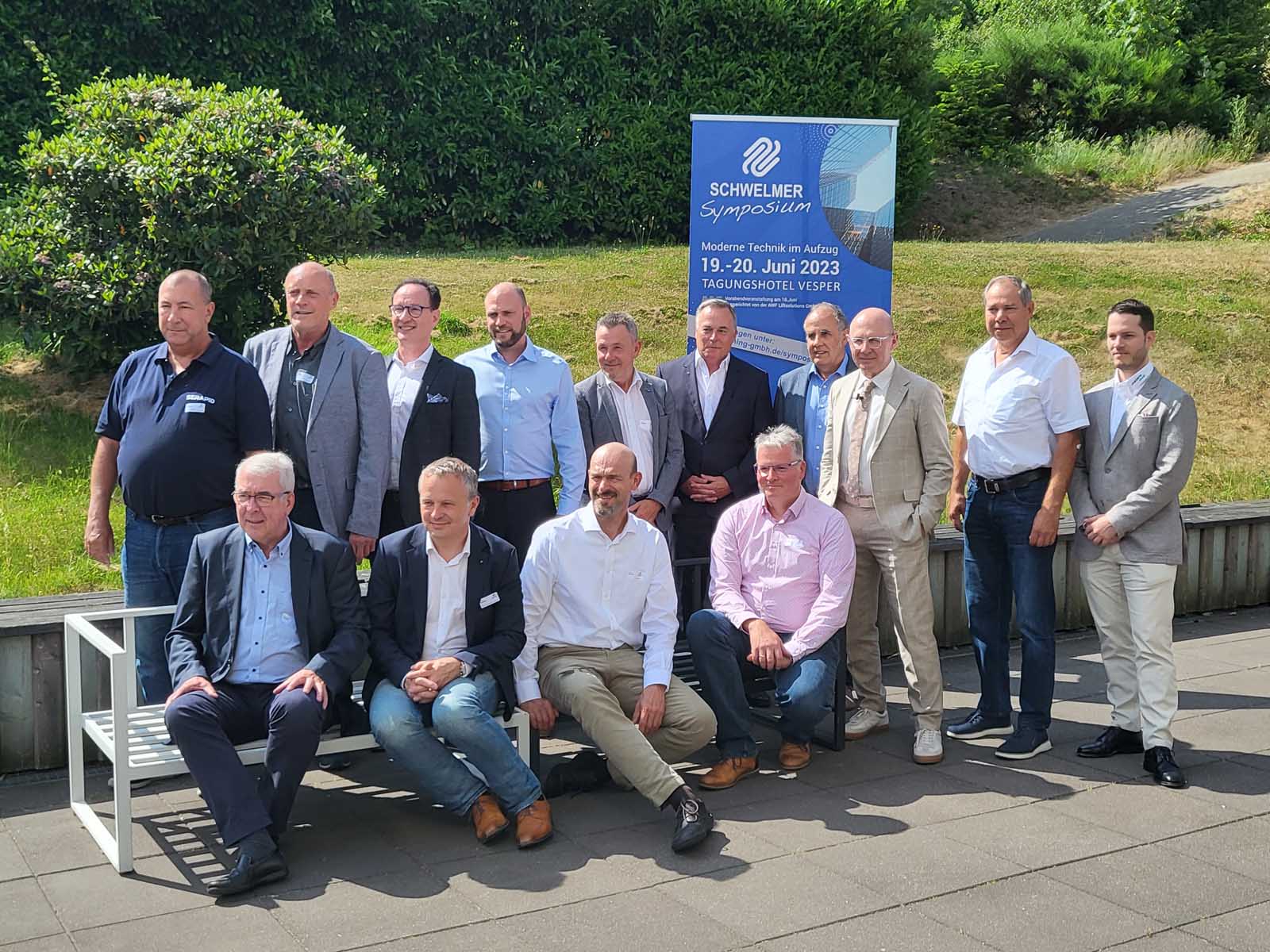
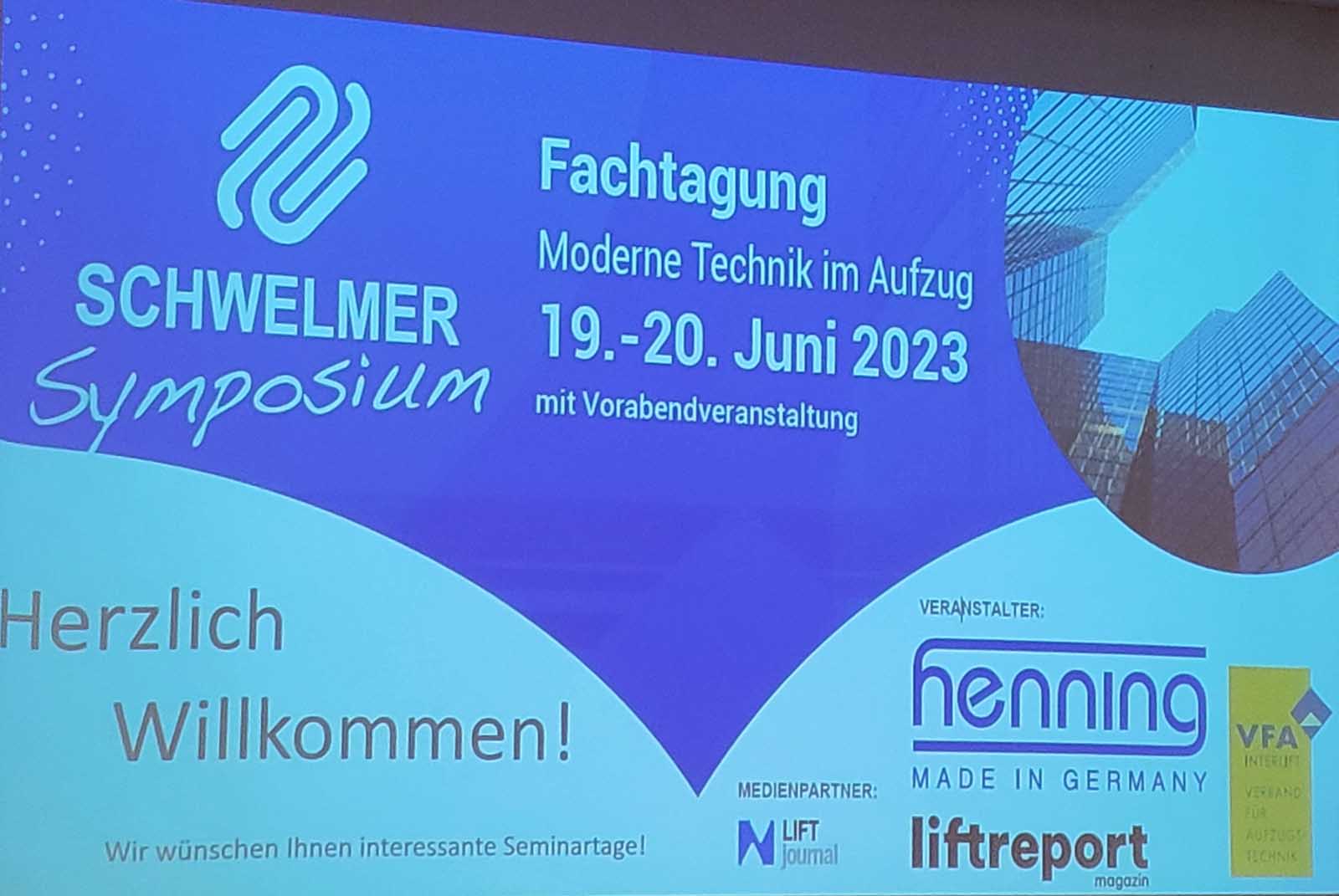
Ludwig Semmler, Ziehl-Abegg: Energy efficient elevator systems
All advertising measures are aimed at power consumption during the ride. Often ignored are standby consumption, elevator size and speed, maintenance and repair costs for ropes and traction sheaves, for example, as well as the service life of the entire elevator. His suggestion: Reduce counterweight compensation from 50% to 40% because an elevator rarely goes up fully occupied. As benefits, he cites about 10-20% energy savings, longer rope and traction sheave life, lower steel consumption and, thus, environmental footprint, reduced installation time and lower material costs. “For me, a really green elevator!” says Semmler. He recommends energy recovery only as a last step because it may take up to 20 years before this measure pays off without subsidies. His final appeal: Return to the repair culture.
Frank Schmidt, Schmitt + Sohn Aufzugswerke (Schmitt + Son Elevator Works): Sustainable elevator modernization – safe – accessible – efficient
In theory, it would take around 65 years for all elevators in Europe to be completely replaced. Reasons for such a replacement or modernization could be that the installation no longer meets safety requirements, building use has changed, the design is outdated or new technology is available, essential components are faulty. There are also energy considerations.
The 2010 E4 study calculated a total energy demand of 18.4 TWh/yr for the approximate 4.5 million elevators in Europe. Because the data are outdated, in 2020, the European Lift Association (ELA) started the EcoData Collection for Lifts. The then-current energy consumption figures, with partially already new energy efficient technology, will serve as a basis for decision making. Only 20% of responses had been received from Europe, so a new attempt with a revised questionnaire was made by ELA in 2022 after the COVID-19 pandemic.
If an elevator is not energy efficient, you have three options:
- do nothing = no improvement.
- replace the elevator completely = energy efficient, but probably not sustainable due to the large use of raw materials.
- modernize = lower reduction in energy consumption, but significantly less use of resources, in total probably the most sustainable option. Advantages of modernization include retention of many components, fewer structural adjustments and lower financial hurdle.
In the past, modernization was mostly driven by laws and standards on safety; today, the megatrends of ecology and accessibility are added to the mix. Therefore, ELA has founded the working group (WG) SAEL (Safety – Accessibility – Energy performance of – Lifts) and published a white paper on the subject. The modernization catalog serves as an inspiration; as an encouragement, as it can be applied a million times over; and as an opinion leader for all decision makers. It can be downloaded free of charge updated by the minute from the ELA website: ela-aisbl.eu/index.php/infodesk/library/brochures. Semmler ended with an appeal to not allow greenwashing.
Simon Gebhard, Algi Alfred Giehl: Partial modernization (sustainability) of hydraulic elevators to frequency-controlled drives
Gebhard discusseed the three guiding strategies of sustainability using his own products as examples:
- Efficiency = improving the input-output ratio. Thus, for example, intelligent control of the motor allows energy consumption to be reduced by 59%. Before, a mechanical valve block was used, and after, a frequency-controlled one. This value can still be increased if a new control system is used in addition to the new unit. In the so-called SmartPack, the Algi unit was combined with a New-Lift control system. The complete configuration can be done via algionline.com. The interfaces are pluggable. Remote access via Elevision on the converter is possible.
- Consistency = transformation of industrial material turnover
- Sufficiency = behavioral changes to satisfy needs in an environmentally friendly way. Thus, it is possible to keep unworn components or to partially modernize them.
Horst Schickor, SBR Aufzugstechnik (Elevator technology): I’m off now! 40 years of elevator construction – 18 years of Schwelm Symposium
Schickor placed his presentation under the heading of “sustainability.” A full maintenance service, for example, is very expensive but can make sense after the warranty has expired, among other things, when the elevator is older than five years, no exclusions are agreed for components or parts, modernization is included, services are properly carried out and TÜV deficiencies are properly eliminated. The opposite was shown in frightening photos.
New installations are a good solution if free components are installed. Cheap solutions with manufacturer-bound components are cheap at first, but with follow-up costs, may not be economical. Partial modernization can be done in several steps. The servicing company can be chosen freely. Overall, costs are reduced, as Schickor demonstrated in detail using various examples, e.g., a hospital.
His review of 40 years of elevator construction began in 1983 with the Elevator Ordinance and TRA (Technical Rule for Elevators), and it included European standards at the end of the 1990s. In 2003, the Ordinance on Industrial Safety and Health (Betriebssicherheitsverordnung) with the associated risk assessments came to be. Today, there are constantly new requirements from regulations and standards.
“BIM Up Your Elevator!“
Bela Hofmann, Planungsbüro (Planning Office) Häcker: BIM in elevator construction – application in planning
At the end of 2015, the phased plan “Digital Design and Construction in the Public Sector” was introduced on a mandatory basis. BIM is a method for optimized development/planning, implementation and operation of buildings using integrated computer models and linked information. The goals of its use are more knowledge, higher quality and transparency, risk minimization, planning reliability concerning costs and deadlines and overall lower costs. The BIM model covers the entire life cycle of a building with the main benefit being in the operation of building services, including elevators.
The path to BIM leads from the drawing via 2D CAD via a 3D model to BIM models and data. Specialist models such as conveyor technology are integrated into the basic model architecture on a project platform/server in IFC exchange format. Today, a procedure with BIM is mostly still based on a requirement of the legislator resp. client/building owner.
Using the example of a new elevator for DB Station & Service, Hofmann went through the individual planning steps. As a result, he cited two advantages of visualization: better understanding of the project, as well as easier and faster decision making. He also pointed out that BIM initially requires more effort due to additional software and training of employees. For him, BIM is the future.
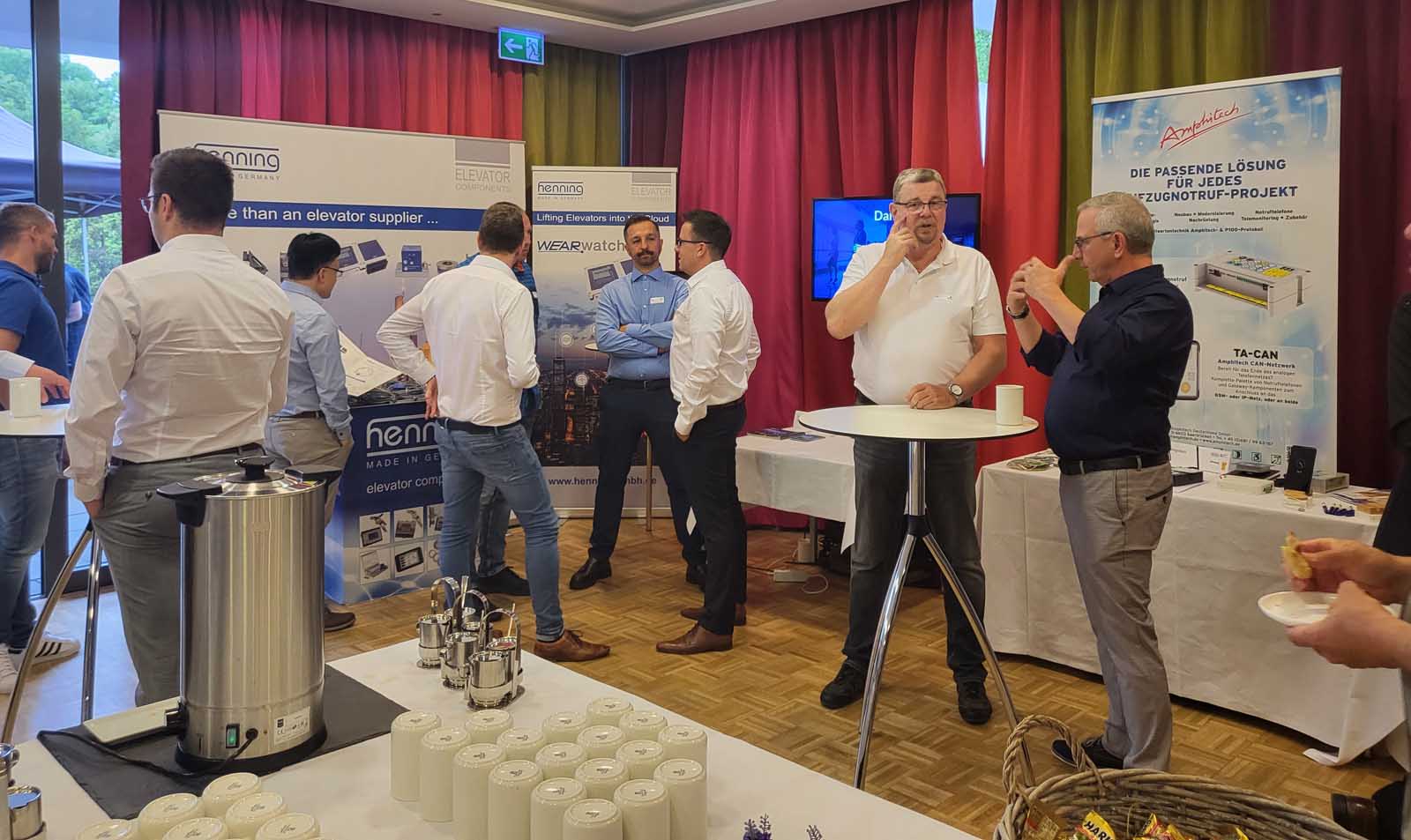
Andreas Fleischmann, DigiPara: Elevatorarchitect: The new BIM platform for architects
In the BIM process, all participants work in a virtual digital model, for elevators based on the standards VDI/bs 2552 part 11.5 draft, regulations of the grouping buildingSMART and the National BIM Standard – U.S. The VDI standard describes the three planning phases level of development (LOD) 100 resp. phase A=rough planning, design study, performance phase (LP) 2, LOD 200 resp. phase B=design planning, LP3, and LOD 300 resp. phase C=implementation planning, LP5. BIM models look different in each phase, i.e., increasingly detailed in higher LODs. BIM simplifies the 24 communication steps between stakeholders up to LOD 500.
Fleischmann then presented the Elevatorarchitect software using screenshots, which maps these procedures up to the BIM model from LOD 100 to LOD 300 as a 2D plan, 2D verticals and/or 2D details downloadable as a DWG or PDF file, for example. An elevator can be duplicated in it into a group. Metadata for architects are quickly available from different manufacturers whose data are stored. For manufacturers, the elevator data can be easily uploaded and, thus, also easily maintained by medium-sized elevator companies. Therefore, an expensive company-owned planning configurator is not necessary. Architects can use the software for five elevators free of charge; only the sixth elevator will be charged. Elevator companies have to make a financial contribution to keep the data up to date.
Fleischmann ended his presentation with the appeal: “BIM up your elevator!”
Florian Runck, Meiller Aufzugstüren (Elevator doors): The Meiller elevator door as a digital twin: Added value through valid data models
A precondition for valid and individual elevator planning with BIM is that all components fit together seamlessly in the digital elevator model. The Meiller Configuration Engine (MCE) is already the basis for every offer. Meanwhile, MCE has been integrated into DigiPara’s Liftdesigner planning software. He cites the following as advantages for planning: All CAD models of the doors are called up in it on a daily basis. The data comes automatically and error-free from the Meiller source system. Adjustments are made in real time. A plausibility check is guaranteed. Beta testing is currently underway.
Pricing and quotation generation are also integrated into the system without breaks. To this end, the door parameters are transferred from Liftdesigner to the Meiller calculation tool. The enquiry in the Customer Cockpit is created automatically. Customer-specific conditions are taken into account and the price is determined automatically. If desired, an enquiry is sent to the sales team. At the end, a BIM data model for the door component is available for automated integration into further work processes.
Andreas Hunziker, CEDES: Becoming a service champion thanks to IoT: Status monitoring and passenger counting around the clock
Hunziker began by listing trends in the elevator market: Digitization, in particular Internet of Things (IoT), solutions for devices involve security risks that are known, but protection against them is often still neglected. New business models and new players are appearing on the market but sometimes with lower profit margins. The shortage of skilled workers is becoming noticeable. IoT retrofits are mostly still rare because elevators are often not suitable for them. Seventy to 80% of all failures occur at doors due to heavy use and abuse.
He then presented CEDES’ retrofit solution with partner relayr, a smart light curtain plus IoT platform that collects sensor data regardless of manufacturer or year of construction. The system provides condition monitoring (algorithms that detect faults before complete failure occurs) and people flow analysis (optimize usage and improve passenger comfort). It optimizes services (reduce corrective maintenance, optimize preventive maintenance, enable predictive maintenance) and deepens customer loyalty. As benefits for elevator companies, Hunziker lists data-based services for optimizing service routines, as well as added value and new revenue streams. As benefits for building owners, he lists information to optimize building use, increase energy efficiency, improved service decisions and proof of business value of the property. More transparency creates more customer confidence. The elevator technician is transformed from an emergency responder to a partner via the data/information.
Thomas Lipphardt, KONE: Evaluation of digital information from elevators (elevator systems)
Lipphardt presented in the most discussed lecture of the conference, examples of the “detective work” that has to be done in order to obtain reliable information from data through research and interpretation, on the basis of which decisions can be made, e.g., on investments or process changes. In passing, he noted that he has made the request to cease the VDI 4707 revision because no reference data are available.
His company has created digital interfaces as a basis. Around 1 million elevators now constantly supply data, e.g., load distribution, speed and/or roughness, on the basis of stored sound profiles. In the very beginning, everyone collects data for themselves to gain information for maintenance. In the future, the technician will only come if there is no other way to solve the technical problem. Lipphardt looked into the distant future: When a certain noise is detected, the system orders the appropriate spare part. Amazon puts the part in the technician’s car overnight. The technician will find information in his inbox about where to go and what to do there.
Lipphardt presented the data and the interpretation from three office buildings and three hotels in Germany. For each location, the total starts over the months were plotted in a graph. An additional table showed in each case the number of trips up and down, total starts, door operations per start, bad stops, bad stops per start, bumps per start and bumps all numbered in rows for each floor. Added to this were key values of total starts, such as number, distance and time.
Lipphardt made it clear that it is not a bad elevator but incorrect use that leads to complaints and/or problems, which can be proven based on the data. The wrong product may have been installed because user data is often sketchy in advance. Many mistakes can be solved with the help of communication. However, it is difficult to communicate such incorrect planning to the customer. It is therefore advisable to create a log of the information received from the customer and have it signed.
Thomas Reimann, Ingenieurbüro (Engineering Office) Reimann: BACnet – Digitization in conveyor technology (elevator integration with BACnet – Overview and introduction)
BACnet (Building Automation and Control Networks) originated in the U.S. from ASHRAE (American Society of Heating, Refrigerating and Air-Conditioning Engineers). The kick-off occurred in 1987, but it was not until 1995 that the first ANSI/ASHRAE standard 135 “BACnet – A Data Communication Protocol for Building Automation and Control Networks” was published, because a consensus of all parties involved was required. In 2003, this paper became ISO 16484-5.
Over time, ASHRAE 135 was further developed and maintained in the U.S. Extensions are published in the form of addenda and are incorporated into the standard from time to time. Currently, the associated Protocol Revision 20 is in effect. The 1,368 pages are available only in PDF format. More than 2,000 manufacturers use the standard for their devices to enable bus communication in buildings. There is further demand for communication between smart buildings and, for example, smart cars.
The service life of the devices today is 20 to 30 years. Their integration must be ensured over this period. Therefore, IT compliance is in progress via BACnet/SC secure connect. Port 443 authentication, as well as authorization and encryption, are used for this. The BIoT (Building Internet of Things) and its “sleeping” devices must also be taken into account. At the moment, a lot of work is being put into semantics tagging to make objects independent of communication protocols and manufacturer-dependent features. Reimann made it clear that everyone in the BACnet Interest Group Europe can actively participate in these further developments.
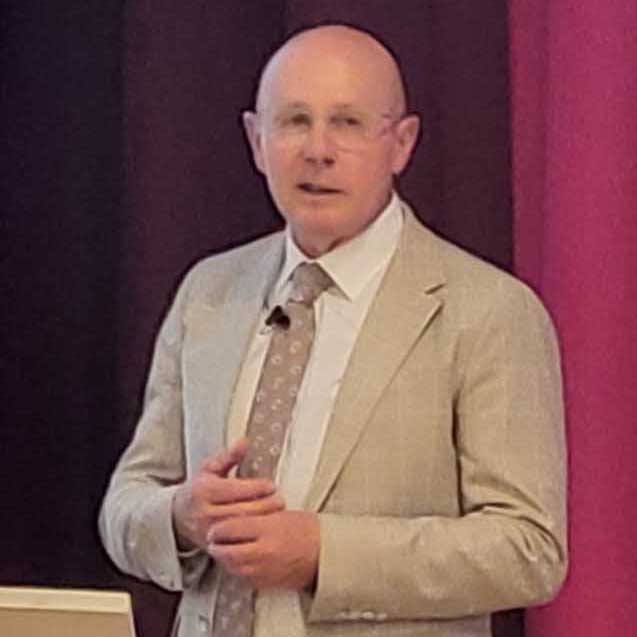
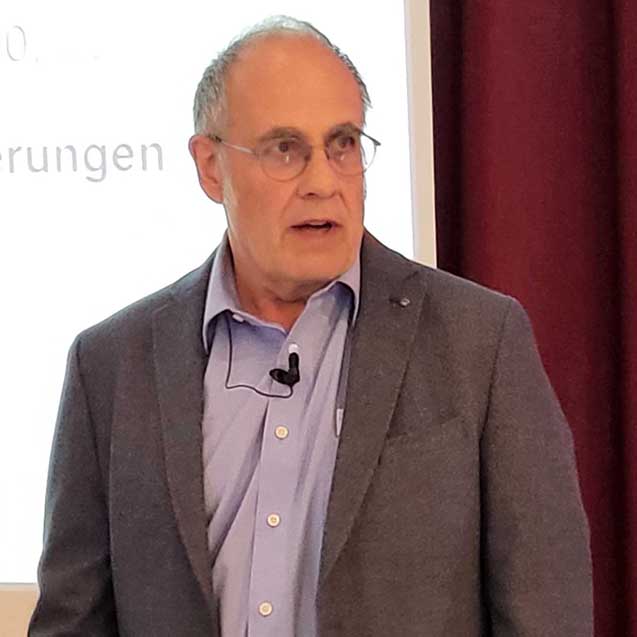
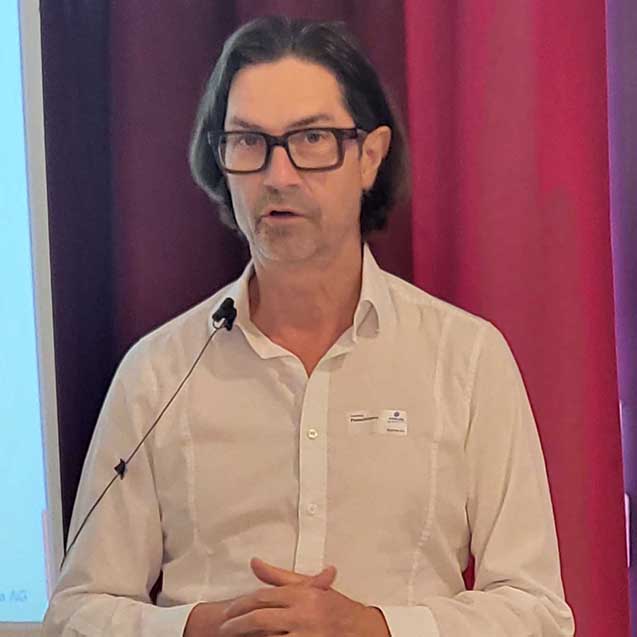
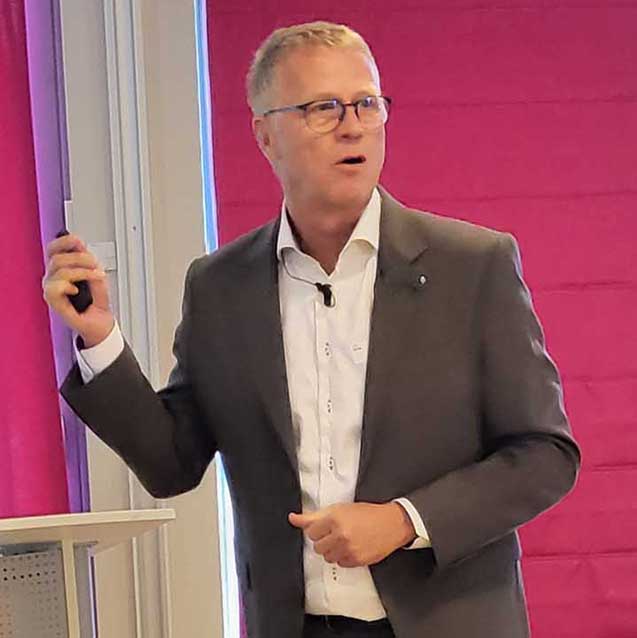
BACnet is able to eliminate the “chaos” caused by devices of different manufacturers using a unified system, comparable to CANopen in elevator construction. The system ensures the interchangeability of components. It is not necessary to access a separate screen or cloud each time, but as many types of devices as possible are supported. Data communication services and protocols for computers are defined for heating-ventilation-air conditioning (HVAC) and other building systems. Data points and messages are supplied and designated as objects, such as measuring device, measured values, operability, inputs for temperature and humidity. Properties are assigned to each object. Device data are exchanged between participants in EDE format. Device diagnostics can be performed with an explorer program.
Elevators and escalators are part of facility management. Interfaces for the data are mostly missing so far. There are approaches for monitoring and controlling elevators via BACnet. Gateways are needed for this, which his company supplies. One can transmit or fetch the data in case of events. The elevator object description was included in BACnet 135-2016.
Nico Raschle/Jörg Hellmich, Next group: CANopen(-Lift) in the cloud/standardized interface
CANopenLift has standardized the “language” on CANbus since 2001. Additional user requirements such as access control and calls with smartphones, operator requirements such as energy management and predictive maintenance, as well as a multi-vendor portal are emerging. In 2017, the Next group was formed to develop open specifications for such smart elevators. The group currently consists of 22 members from operators, specialist planners, manufacturers of control systems and other components, as well as platform operators.
To connect to a cloud solution, CANopen Lift Connector was developed by project maintainer Masora (cloud) and master contributor Thor (controller). It covers requirements such as access to the CANopen object dictionary or encryption with certificate and is both network and platform independent. An overview of the IT solution was given. Then, the reference implementation and roadmap for the further development of masora.cloud was presented.
Technical Solutions
Prof. Dr.-Ing. Wolfram Vogel, Vogel Gut Achten (arbitrament): Passenger conveyor technology – Expected and unexpected applications
Vogel started the conference and his presentation with a summary of interdisciplinary technical development until 2022. This addressed suspension means, various forms of communication, machine learning and also contributions to climate protection: all future-oriented topics that led to the invitation of the speakers at this conference.
Furthermore, Vogel dealt with technical details of conveyor systems. What they all have in common is the need for a high level of safety and the necessity to satisfy this need by means of varying technical measures. But his focus was on “unexpected” installations, from whose performances and solutions elevator engineering might be inspired:
- Roller coasters up to 200 km/h and 128 m high, whose wheel sets, visual and magnetic rope checks and brakes resemble an elevator
- Free-fall towers up to 128 m, whose rope drive with drum or traction sheave in the mast resemble an elevator. The free fall there is only a feeling because the system is braked, but the rope is heavily stressed. For energy efficiency reasons, these systems are no longer operated in Europe.
- Sling shot: pure steel rope technology with spring storage
- High-bay storage
- Wind turbines up to 160 m with internal elevator for people and goods. The new standard for this is prEN 81-44. The systems operate with only one rope and are rarely used.
Olaf Klingner, Serapid Deutschland (Germany): Market opportunities with push chain technology: From gigalifts to passenger elevators
Klingner’s systems promise more performance at lower cost. For this purpose, push chain elevators have the following parameters:
- precise: handle uneven loads and accurate positioning due to the lifting column
- economical: compact with low-pit depth, since everything except the control cabinet is positioned in the pit itself, and without machine room
- adaptable: easy retrofitting and scalability
- reliable: easy service and predictable wear and tear
- sustainable: no oils and energy recovery
- repeatable: no locking devices and unlimited starts
The system handles high total loads up to 60 t. Additional variants allow greater traveling heights up to 50 m at low speeds up to 0.3 m/s via guided yoke frames as well as outdoor installations. As an example, Klingner describes, among other things, the system in the production at a German car manufacturer with a capacity of 23,800 kg = 316 persons.
Development is currently underway for a Vertical Linear Beam (VLB) Lifting System for passenger elevators with forklifts or beverage packages, for example. The backpack elevator will have a load capacity of up to 3,500 kg or 7,000 kg. It can operate in a temperature range of -40° to + 80° Celsius; the control system may be the limit here.
Ricardo Dyroff, Meiller Aufzugstüren (Elevator Doors): An industry in transition: Added value by innovation and sustainability
Dyroff shared his presentation with Runck. He dealt with the impact of modernization on the door business. Among other things, he based his statements on VDMA business figures, which showed a slight decline in new installations business of minus 1.6% and modernizations of plus 15.4% for 2020/21. Between 2009 and 2020, there was a steady increase in new construction activity in Germany and Europe, leading to an increase in conveyance systems from 725,000 in 2016 to 800,000 in 2021. On average, elevator systems in Germany are 32.9 years old — with an upward trend. Demand for modernization solutions is rising.
For elevator builders and component manufacturers, modernizations are overloaded with challenges from customers. For example, they want to maintain representative surfaces, reduce downtime, maintain portals and frames but also landing doors and/or the car. To meet these requirements, suppliers need a high level of technical competence, in-depth knowledge of systems’ history and a customer-specific needs’ analysis. As added value for investors and operators, this results in high system availability, as well as a sustainable, resource-saving and cost-efficient solution. Finally, Dyroff presented Meiller’s modernization solutions, e.g., for spreaders, clamps and roll drivers in the ComfortLine (Plus) and CompleteLine lines.
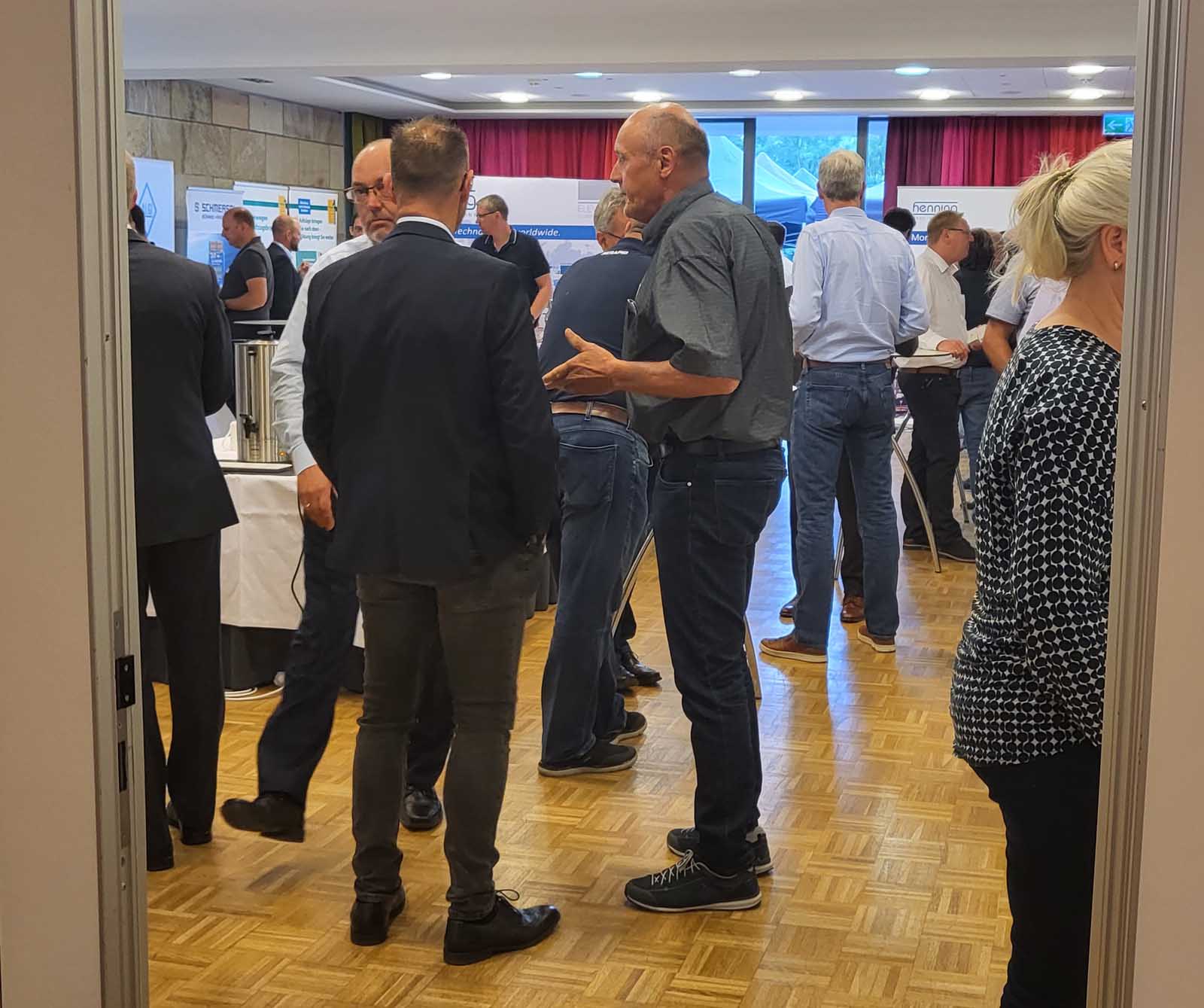
Everything Proceeds as Regulated
Franz Watzke, FW Lift-Tech Consulting: Development of standards
Watzke dealt with two transfers of standards resp. legal regulations: EN 81-20/-50 to EN ISO 8100-1/-2 and EU Machinery Directive (MD) to EU Machinery Regulation (MR).
In the original schedule, June 2022 was already planned for the transfer of EN 81-20/-50 to EN ISO 8100-1/-2. However, the publication is delayed due to the many external comments and the review on behalf of the EU Commission by the EU HAS consultant. The latest version is from the CEN TC WG 1 meeting on May 22-23 and work is still continuing. By 2027, the EN 81 series and other elevator-related standards are expected to be transferred to EN ISO 810X-XX. Ongoing revisions in the EN 81 series look as usual.
The following changes and additions have already been determined: The numbering for prEN ISO 8100-1/-2 is to be changed. Contents will be converted into Annexes, such as the list of significant risks. An addition on suspension means will be included. Annex A sample of a type test is omitted. Annex E (informative) deals with the relationship between ISO 8100-20 and ISO 8100-2. Technical changes include new suspension means, traction sheave elevators with increased usable space, additional requirements for machine brakes, pit access, retracting hands in doors, SIL rated safety circuit replaces PESSRAL, automatic release system and vertical sliding doors. VFA is preparing comparative tables between EN81-20/-50 to EN ISO 8100-1/-2.
The MD 2006/42/EC is, as the date in the title indicates, already rather old. Thus, in 2023, it will be replaced by the EU MR. On April 18, the regulation was adopted in EU Parliament. It was published in the Official Journal of the European Union on June 29. The MR was entered into force on July 19. The transition period until application is 42 months, i.e., until January 2027. The transitional provisions are still to come in Chapter IX. Harmonization according to MR for EN 81-3X/-4X will thus only be possible from 2027 onwards.
The aim of the revision is to harmonize the safety level and conformity assessment for elevators in accordance with the Lift Directive (LD) and MR. Individual testing will be possible analogous to the LD, although the procedures are still unclear. Safety software without hardware will be tested separately and considered a safety component. AI will be integrated; type testing will then become mandatory. Cybersecurity statements on protection against corruption and external influences can be found in Annex III; a connection to the outside, e.g., to the internet, must not compromise the safety devices.
Dieter Roas, TÜV Süd (South): Impact of ÜAnlG on the elevator market
Roas dealt with the Act on Installations Requiring Monitoring (überwachungsbedürftige Anlagen-Gesetz ÜAnlG) of July 2021, to which various explanatory and clarifying ordinances are still to follow. The law serves to ensure the safety and health protection of employees and other persons who are in the danger zone of such a system requiring monitoring.
- §1 defines the area of application for the construction, modification and operation of systems requiring monitoring for employees and other persons.
- §2 provides definitions such as systems requiring monitoring, employees, operators (“for the first time!”) and Notified Bodies.
- §3 provides basic requirements: The operator must ensure that the systems requiring monitoring are set up, modified and operated in such a way that the safety and health protection of employees and other persons is guaranteed.
- §4 Risk assessment specifies that it must be made for all elevator installations and that the operator is responsible for it.
- §5 Protective measures again make the operator responsible for all protective measures such as inspections and servicing/maintenance.
- §7 The operator must also ensure that inspections are carried out at all times and on all occasions. The operator is also required to rectify minor deficiencies within one year.
- §10 The Central Supervision Bodies (Zentralen Überwachungsstellen ZÜS) are responsible for detecting deficiencies and their re-inspection.
- §11 establishes the creation of a register of installations at the state level.
- §13 requires an exchange of experiences between the ZÜS.
- §14 regulates the ZÜS’s duty to notify the licensing authority.
- §32 lists the fine regulations from EUR10,000 to EUR100,000.
- §33 threatens in the penalty provisions, under certain conditions, a prison sentence of up to one year or a fine.
Tobias Brendel, Ingenieurbüro (Engineering Office) Brendel: Technical rules for transport capacity calculation and transport capacity of elevators
A traffic calculation was performed according to AMEV 2017 until 2022 and according to ISO/FDIS 8100-32:2020 thereafter. The higher the buildings, the more space must be provided for elevators. The AMEV calculation of necessary elevator systems and transport capacity is based on the car round trip time (RTT) or turnaround time Z with many influences whose values are usually summarized in tables. In ISO, the basis is the car RTT with various similar but also different influencing factors in comparison to the AMEV, the values of which are, however, mostly calculated. The comparison shows: In general, the number of calculated elevators is somewhat larger under ISO than under AMEV.
Some practical parameters for elevator ride quality such as acceleration or bump have been published in CIBSE Guide D:2015, even though the perception is subject to personal perception. Measured values for the evaluation of ride quality are determined according to the specifications of ISO 8100-34:2021, which does not contain limit values or evaluation of the measured vibrations.
Several manufacturers offer measurement systems for determining ride quality. These indicate various vibrations in the x, y and z directions and convert them into speed, acceleration and deceleration, which allows an assessment of the quality.
According to Nees/Brendel, the limit values for elevators in residential areas are 0.1 m/s in the x-direction, 0.1 m/s in the y-direction and 0.15 m/s in the z-direction to achieve a “good” rating. Brendel concluded by proposing a new VDI standard on the subject.
“No One Is Safe From Such an Accident.“
Ulrich Nees, Nees Consulting: Influences of structural conditions on airborne and structure-borne noise emissions
DIN EN 13658-1 deals with the influence of metal plaster bases for interior plasters but does not specify any requirements to keep noise as low as possible. The sound pressure level in the elevator shaft is higher than in the stairwell due to the longitudinal wave. As the distance of the concrete covering increases, the noise protection level in the room requiring protection decreases. A 100 kg/m³ difference in raw density for normal concrete results in plus/minus 0.4 – 0.5 dB. A 16/20 compressive strength of concrete is not recommended for elevators. If rooms requiring protection touch the shaft or machine room, an area-related mass of 580 kg/m² corresponding to 24 cm wall thickness is required. The difference between unmoving and moving must be at least 23 dB, otherwise the permissible structure-borne sound level cannot be achieved. Noise transmission (acoustic impedance) through flanking elements often causes problems; Nees presented optimized methods and measurement by means of modified impact echo methods.
Gerhard Quanz, Gewerbeaufsichtsbeamter (Industrial inspectorate official): “How far do I actually have to go?”
Quanz played out in detail an accident in a public building in which one of four identical elevators situated next to each other fell 38 m upward without braking. During the investigation, it was determined that the interlocking of the brake disk of the shaft-hub connection had probably failed since a new brake disk with possibly cheaper material had been installed. At the end of a long investigation, Quanz stated, although there had been no violation of public requirements, the question of how to prevent such an incident remains unanswered. Considerations included changing regulations, revising contracts, expanding quality controls and regularly replacing the drive after 10 years. Quanz gave the audience the following message: “No one is safe from such an accident.”
Volker Lenzner, VFA-Interlift: Shortage of skilled workers in the elevator industry
Lenzner first presented the offers of the VFA Academy to combat the shortage of skilled workers: 50 training courses/year and more than 400 participants/year, as well as sponsoring events including the Schwelm Symposium. VFA agrees with the European visions of ELA: A European network of education providers and a binding education level for different elevator jobs are needed.
The situation in Germany in the elevator construction sector has changed: There is decreasing education and familiarization. New buildings are being assembled by subcontractors. Demographic change means that there are constantly fewer employees with professional experience. Supervisors often have little technical elevator knowledge. To underline the value of offering solutions to these problems, a certificate course to qualify as a “Specialist in Elevator Technology (IHK)” is being planned with the Nuremberg Chamber of Industry and Commerce (Industrie- und Handelskammer IHK) for Central Franconia. This is linked to the hope of being recognized as an industry in the political arena via the IHK.
The association has compiled further measures in a roadmap to attract and qualify more personnel for the elevator industry. Ideas and support are expressly welcome.
Looking Ahead
The anniversary edition “20 Years of Schwelm Symposium” will take place on June 17-18, 2024. The pre-event on June 16 has the same motto and offers an opportunity to celebrate the event appropriately. The event will be held at the hotel Fritz am Brunnen in Schwelm, Germany. This is the venue where the first symposium and already many others have taken place.
Get more of Elevator World. Sign up for our free e-newsletter.
